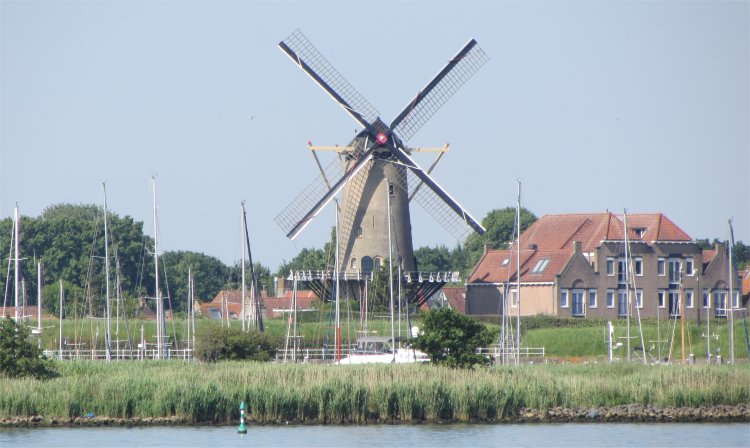 Farewell Willemstad |
Another warm, sunny day greeted us. Showered and breakfasted, we made a plan for the day, bade farewell to our Belgian neighbours, and headed off to the town harbour for fuel. Then we nosed out into the Hollands Diep, and skirted a huge chemical plant on our starboard side. Much commercial traffic was chugging along this stretch of water. In the distance we could see the long Moerdijkbrug road bridge and Moerdijkspoorbrug rail bridge spanning the Hollands Diep, that carried traffic to Dordrecht.
 Moerdijkbrug and Moerdijkspoorbrug |
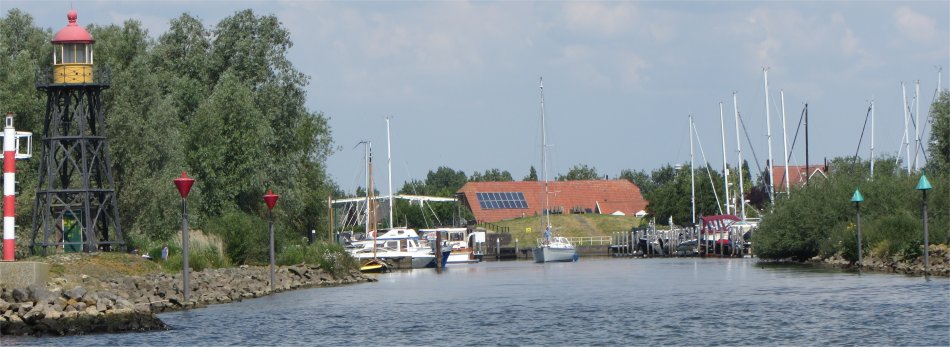 Marina on the Dordtsch Kil |
We turned left before them and motored up the Dordtsch Kil towards Dordrecht. This was a relatively narrow channel, and we constantly had to monitor the depth since the large amount of commercial traffic was forcing us closer to the bank. At one point, a large barge, a tug towing a colossal crane, and a sea going ship were side-by-side at the same time.
 Congested Dordtsch Kil |
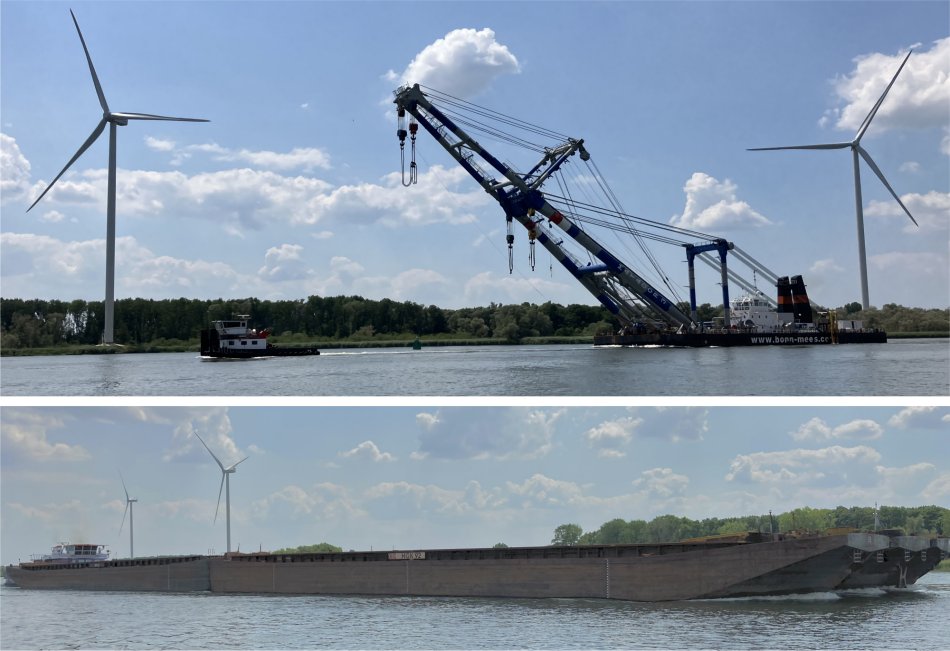 Large Traffic on the Oude Maas |
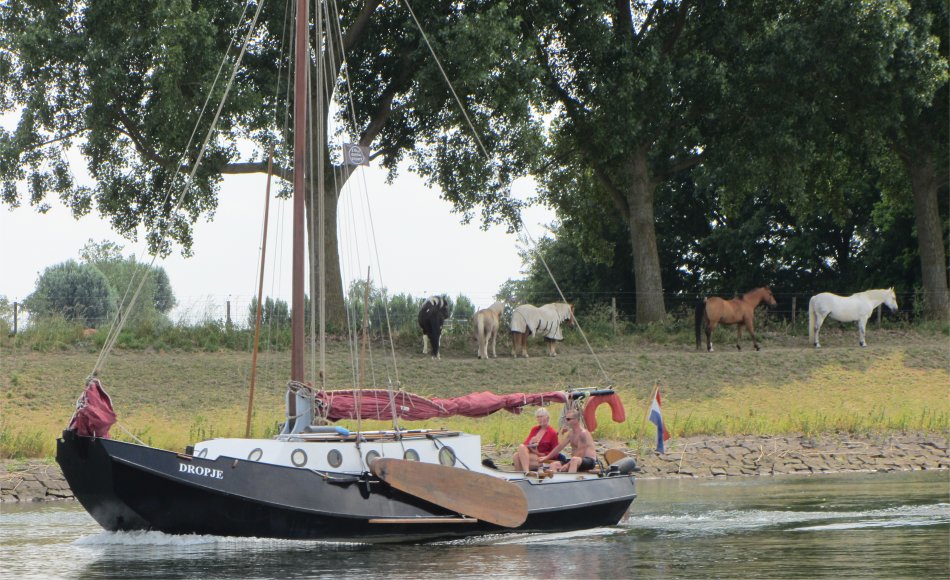 Slower Pace of Life on the Spui ....... |
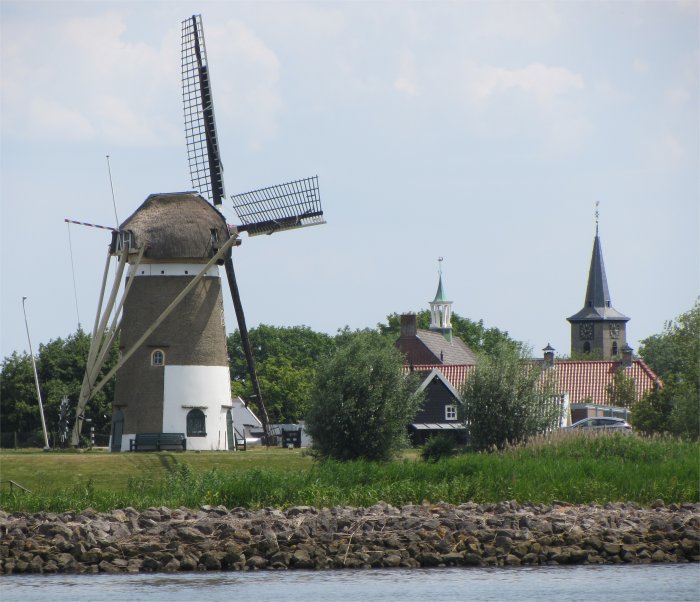 ....... with a Peaceful Village on the Spui |
The name Hellevoetsluis translates as "lock at the foot of the Helle", the Helle being a small local river that disappeared over time. The town's history has always been connected with water. During the time of the Eighty Year's War and the forming of the United Provinces, Hellevoetsluis was the naval port of the Admiralty of de Maze (Rotterdam) and could accommodate an entire fleet within a special land-enclosed fortress with harbour and dockyard facilities, accessible through a canal. Thanks to its strategic situation the town grew from the beginning of the 17th century to be the homeport for the Dutch war fleet. In later years the port was fortified more and more and Hellevoetsluis, therefore, became a unique combination of a fortified town and a naval port. The Admirals Maarten Tromp, Michiel de Ruyter, and Piet Heyn had their home base here. In 1688 during the Glorious Revolution William III of Orange's invasion fleet departed from the port. On 5 November 1688 a fleet of 463 ships with 14,000 men landed William III of Orange in Torbay, having sailed from Hellevoetsluis to claim thrones of Great Britain. Hence Hellevoetsluis is twinned with Torbay. The naval base was relocated to Den Helder in the 1930s, the Government shipyard was closed, and during World War II the Germans destroyed three-quarters of all buildings in 1944.
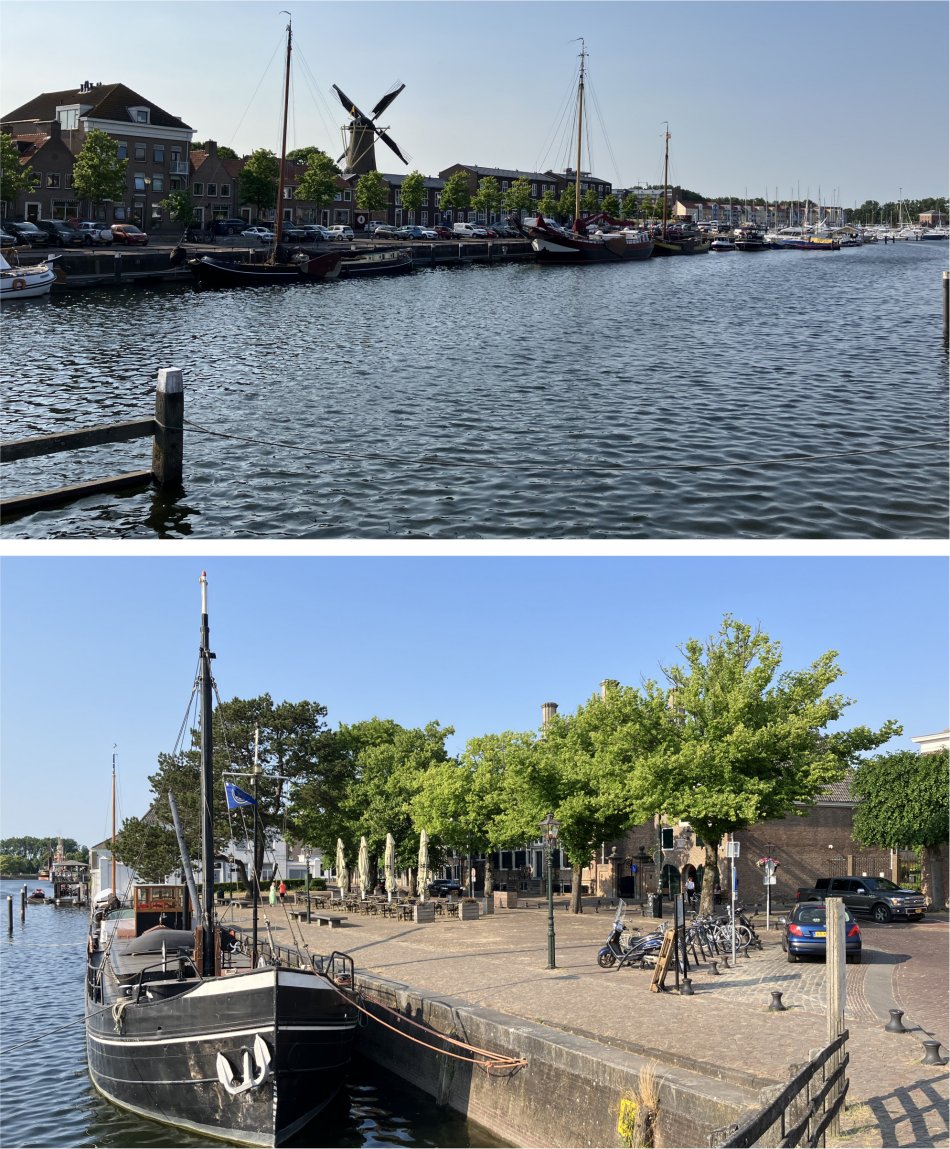 Hellevoetsluis Inner Marina |
We estimated we needed to stay for three nights at Scheveningen to take in all the towns we wanted to see from that base. Erring on the side of caution, I decided to call Scheveningen and book ahead. It was just as well; they could only fit us in for one night - something to do with a major yacht race finishing at Scheveningen. Not a show-stopper, but a major change of plan would be required.
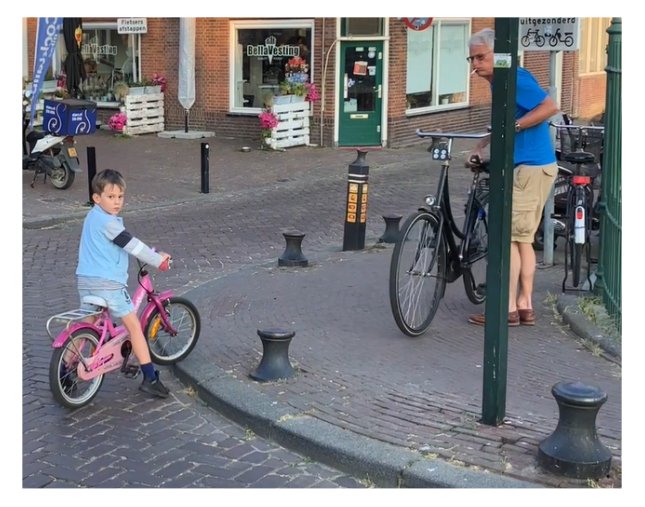 Confrontation |
It was a blow to the solar plexus; we had just undertaken a six-hour detour into an enormous cul-de-sac. I called the lock keeper, who patiently advised that the lock would be fixed by 2pm the next day, and wound up the conversation by stating it would be fixed by 1pm. Hmmm…. Which time do I suspect as being correct.
There was nothing to be gained by moping about it; we decided to head to town and grab a beer and food. We passed the Dutch couple, the pair immediately recognising both of us. They were Pieter and Miriam who we had met in Willemstad last year. What a strange coincidence. Then it all fell into place. I felt embarrassed that I had not recognised the couple. We chatted away, and they showed us the tour of the East of England they had undertaken since we last met.
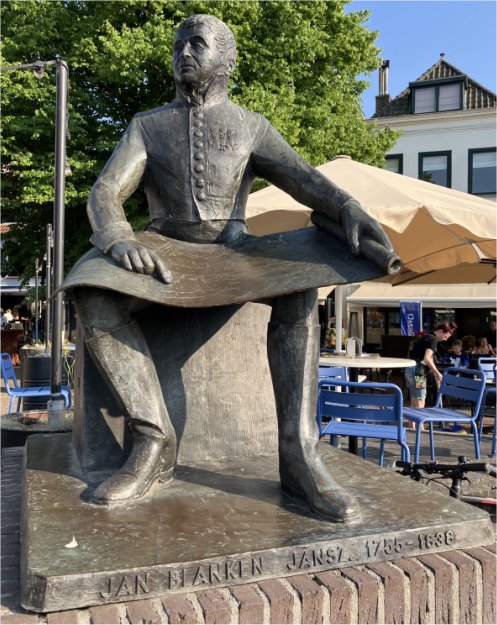 Jan Blanken 1755-1838 |
Success, we got the keys, and soon we were cycling into town on sit up and beg bikes. The cycling was fine, but I found it difficult to brake: there were no brakes, the technique was to pedal backwards. We weaved our way into the centre of town, and enjoyed a beer in the small central square.
A statue of Jan Blanken took pride of place in the square. The young Jan Blanken followed in the footsteps of his father, who was a hydraulic engineer charged with the design and construction of windmills, locks and dikes. Blanken gathered practical knowledge from his father for the design, improvement and management of water.
The first major project for Blanken was the dry dock in Hellevoetsluis, construction of which started in 1798. What was special about this was that a steam engine was purchased from James Watt's company to pump out the dock. It was one of the first in the Netherlands. In 1808 Blanken also designed a new lock gate, the fan lock. In 1808, Blanken became Inspector General at the time of the Kingdom of Holland Water Management. He remained so, under King Willem I, until 1826. Blanken gained most fame through the realization of the North Holland Canal between Amsterdam and Den Helder.
Hunger pangs struck and we shifted ourselves to the Bistro In De File, a delightful, unpretentious restaurant near the square. Here we met a Dutch couple who spoke good English, which was not surprising since they worked for Shell for five years near Chester. They had lived in a small community, Lymm, near Warrington, and were most impressed with the way they could fit in and become part of the community. Since then, they had often sailed back to Britain visiting places such as Edinburgh, Whitby, Great Yarmouth. The Isle of Wight and the south coast. The chap corrected me on one of my sentences uttered in Dutch, and then we got onto the subject of the Dutch language. The woman tried to convince us that Flemish is more like true Dutch, and there is little similarity between Dutch and German. From an Englishman's view point, where I have a decent knowledge of German and was trying to learn Dutch, I disagreed on that comment, and explained to her that the word "Dutch" was derived from Deutsch centuries ago, when all low-countries spoke Deutsch as far as Britain was concerned. She would not have this and went off into a diatribe of 14th century Dutch. She had a passion for history.
Alas the couple had to leave, and we had to cycle all the way back to the marina.
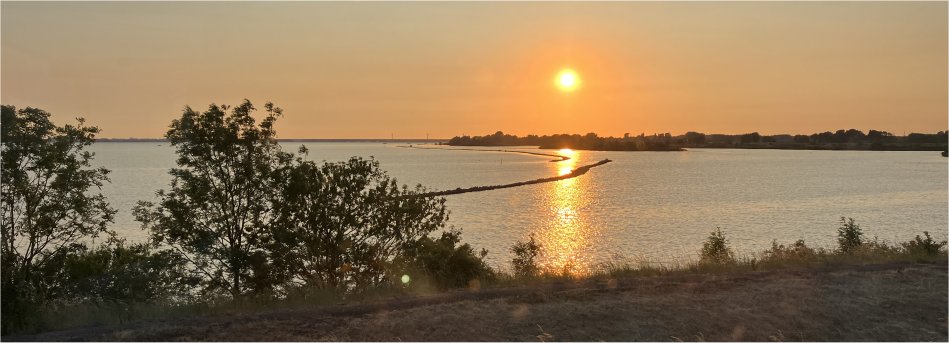 Sunset Over Bird Sanctuary Adjacent to the Marina |
